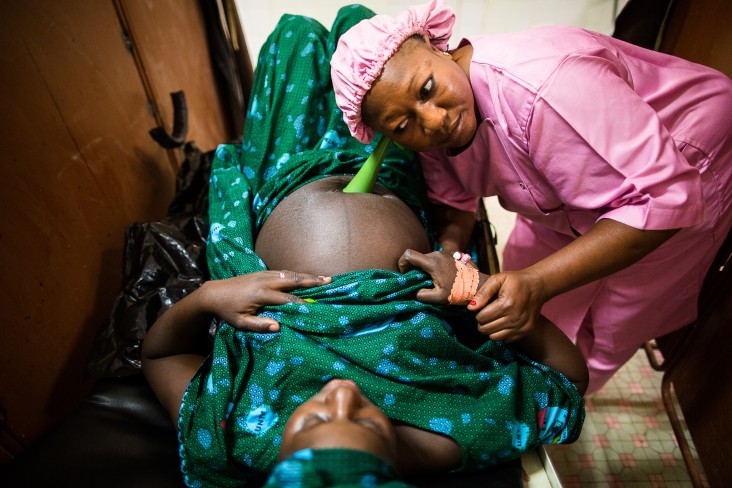
Maternal and Child Health Investments in Mali, FY17: $16,500,000
Mali Quick Facts
2 million women suffering with fistula across the globe, with 50,000 to 100,000 new cases each year.
2,400 women in Mali are at high risk of obstetric fistula each year.
1,294 USAID-supported fistula repair surgeries in Mali from 2008-present.
Since 2004, the U.S. Agency for International Development (USAID) has been combating obstetric fistula in Africa and South-East Asia through efforts focused on prevention, treatment and the reintegration of women with obstetric fistula. Women who experience prolonged or obstructed labor may develop an obstetric fistula, or hole, that forms between the birth canal and bladder and/or rectum. This abnormal opening causes the mother to lose control of her bodily fluids, leaving her incontinent. While surgical treatment is simple enough in theory -- just find a way to close the hole -- the process can vary greatly depending on the size of the fistula. Focused on timely and high-quality medical care, USAID supports over 50 facilities throughout Africa and South-East Asia.
“I am healed and I have been dignified:” How USAID is healing women with obstetric fistula
The 13th daughter of the village leader, Agaicha was married off by her father at age 15 to the head of the neighboring village. Soon after her marriage she became pregnant with her first child. Her pregnancy gave no warning as for the hardship to come: her labor. Even from the start her labor was difficult, and she suffered for five days in the care of local village women. When it was clear that she would not be able to have her baby, she traveled over 65 kilometers to the nearest treatment center where an unskilled health provider pulled her baby out by force. “My son was dead,” Agaicha recalled, “and the following day, my torment started: I could not control my bladder anymore.”
A Double Tragedy
A woman experiencing prolonged and obstructed labor while giving birth is not uncommon in low-resource settings such as Gao, Mali. Like with Agaicha, having an obstetric fistula is a double tragedy -- not only is the mother left incontinent, but in up to 90% of the cases, the baby is stillborn. Leaking constantly, these women suffer from multiple chronic medical conditions, such as nerve damage and kidney disease, as well as social isolation and discrimination due to the foul odor of the urine. To add to this pain, many women are completely abandoned by their husbands and families, treated as though their leakage is a curse or karmic punishment for a wrongdoing. Fistulas are largely a product of the lack of access to timely and quality emergency obstetric care. The United Nations Population Fund estimates that there are as many as two million women suffering with fistula across the globe, with 50,000 to 100,000 new cases developing each year. However, obstetric fistulas can be prevented by timing pregnancies through family planning methods and can be treated through surgical and non-surgical procedures.

Finding Hope
Like many women before her, Agaicha was abandoned by her husband and in-laws once they realized her incontinence was permanent. “People became suspicious of me,” she remembers, “before, I had been a princess that everyone looked up to. Now I was just a wreck.” She recalls her friends avoiding her as though she were contagious, treating her like a leper. She had no choice but to go back home to her father in hopes that he would take care of her. “Things went on like that for two years. Then my father heard on the radio that it’s possible to treat this sickness…it was then that I realized how much my father loved me,” says Agaicha. That radio message, sponsored by USAID to advertise the Gao fistula mission, saved her life. Her father saved up money to send her to Gao, where he stayed with her for 45 days while she waited for the surgical treatment that would change her life. “Today, I am healed and I have been dignified.” Not only is USAID committed to the surgical treatment of women with fistula, but also in advancing our knowledge about what causes fistula, exploring less invasive treatment methods, highlighting the importance of utilizing family planning services to prevent fistula, and utilizing innovative methods to effectively engage and educate communities about fistula and treatment options. USAID continues to strive for a fistula-free generation of women with a commitment to providing quality and timely emergency obstetric care, creating opportunities for girls to stay in school and avoid early marriages, and dissolving the barriers to care created by inequality and poverty. Between 2005 and June 2017, 46,739 fistula repair surgeries were supported by USAID.







Comment
Make a general inquiry or suggest an improvement.